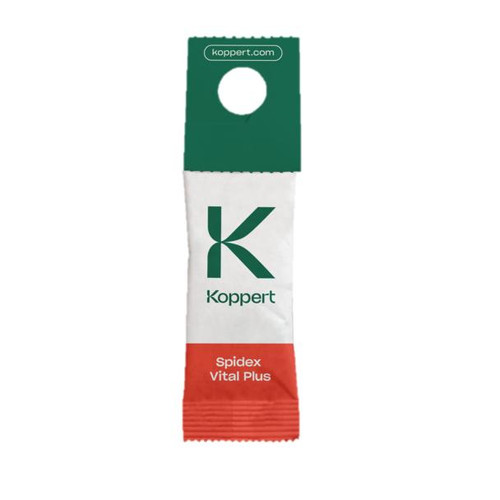Spider Mites
There are over 1,200 species of spider mite in the world. The two-spotted spider mite, or Tetranychus urticae Koch, may be the most common pest in Cannabis production. Thrips can feed on spider mite eggs, but we don’t recommend relying on them as a method of control!
Refine:
-
 Spical Ulti-Mite Sachets
Spical Ulti-Mite SachetsSpical Ulti-Mite Sachets (Neoseiulus californicus) — Predatory Mite for Spider Mite ControlSpi…
Use For Two-Spotted Spider Mites, Thrips, White Fly, Broad and Russet Mites, Flat MitesSpecies N. californicus$34.28 -
 Spidex Vital
Spidex VitalSpidex Vital Bottle (Phytoseiulus persimilis) — Predatory Mite for Spider Mite Control Spidex …
Use For Two-Spotted Spider MitesSpecies P. persimilis$43.00 -
 Thripor
ThriporThripor (Orius insidiosus) — Predatory Bug for Thrips ControlThripor contains Orius insidiosus…
Use For Thrips, Two-Spotted Spider MiteSpecies Orius insidiousus$136.48 -
 Spical PLUS Sachets
Spical PLUS SachetsSpical PLUS Sachets (Neoseiulus californicus) — Predatory Mite for Spider Mite ControlSpical P…
Use For Two-Spotted Spider Mites, Thrips, White Fly, Broad and Russet Mites, Flat MitesSpecies A. californicus$80.34 -
 Spical
SpicalSpical Bottles (Neoseiulus californicus) — Predatory Mite for Spider Mite Control Spical bottl…
Use For Two-Spotted Spider Mites, White Fly, Broad and Russet Mites, Flat MitesSpecies A. californicus$141.40 -
 Spidex Vital PLUS
Spidex Vital PLUSSpidex Vital PLUS Sachets (Phytoseiulus persimilis) — Predatory Mite for Spider Mite ControlSp…
Species P. persimilisUse For Two-Spotted Spider Mites$69.63 -
 Isarid Mycoinsectide
Isarid MycoinsectideGeneral information When to use Isarid? Isarid™ works best in a pest management program de…
Use For whiteflies, aphids, thrips, psyllids, mealybugs, leaf hoppers, plant bugs*, weevils*, grasshoppers*, Mormon crickets, locust, beetles, mites, bagrada bugs, lygus bugs, and fungus gnats*. *Not Registered for Use By California$220.67 -
 Spidex "Boost" Sachets
Spidex "Boost" SachetsSpidex Boost Sachets (Phytoseiulus persimilis) — Predatory Mite for Spider Mite ControlSpidex …
Use For Two-Spotted Spider MitesSpecies P. persimilis$385.63 -
 Anso-Mite
Anso-MiteAnso-Mite (Amblyseius andersoni) — Cold-Tolerant Predatory Mite for Thrips, Spider Mites &…
Use For Thrips, two-spotted spider mites, broad mites, russet mitesSpecies A. andersoni$321.36 -
 Aphidalia
AphidaliaAphidalia (Adalia bipunctata) — Targeted Aphid Control with Ladybug LarvaeAphidalia contains l…
Species Adalia bipunctataUse For Aphids$64.27 -
 Spidex Vital GO
Spidex Vital GOSpidex Vital GO Sachets (Phytoseiulus persimilis) — Predatory Mite for Spider Mite ControlSpid…
Species P. persimilisUse For Spider Mites$234.00 -
 Spidend
SpidendSpidend (Feltiella acarisuga) — Gall Midge PupaeSpidend contains the pupal stage of Feltiella …
Use For Two-Spotted Spider MitesSpecies Feltiella Acarisuga$171.39

